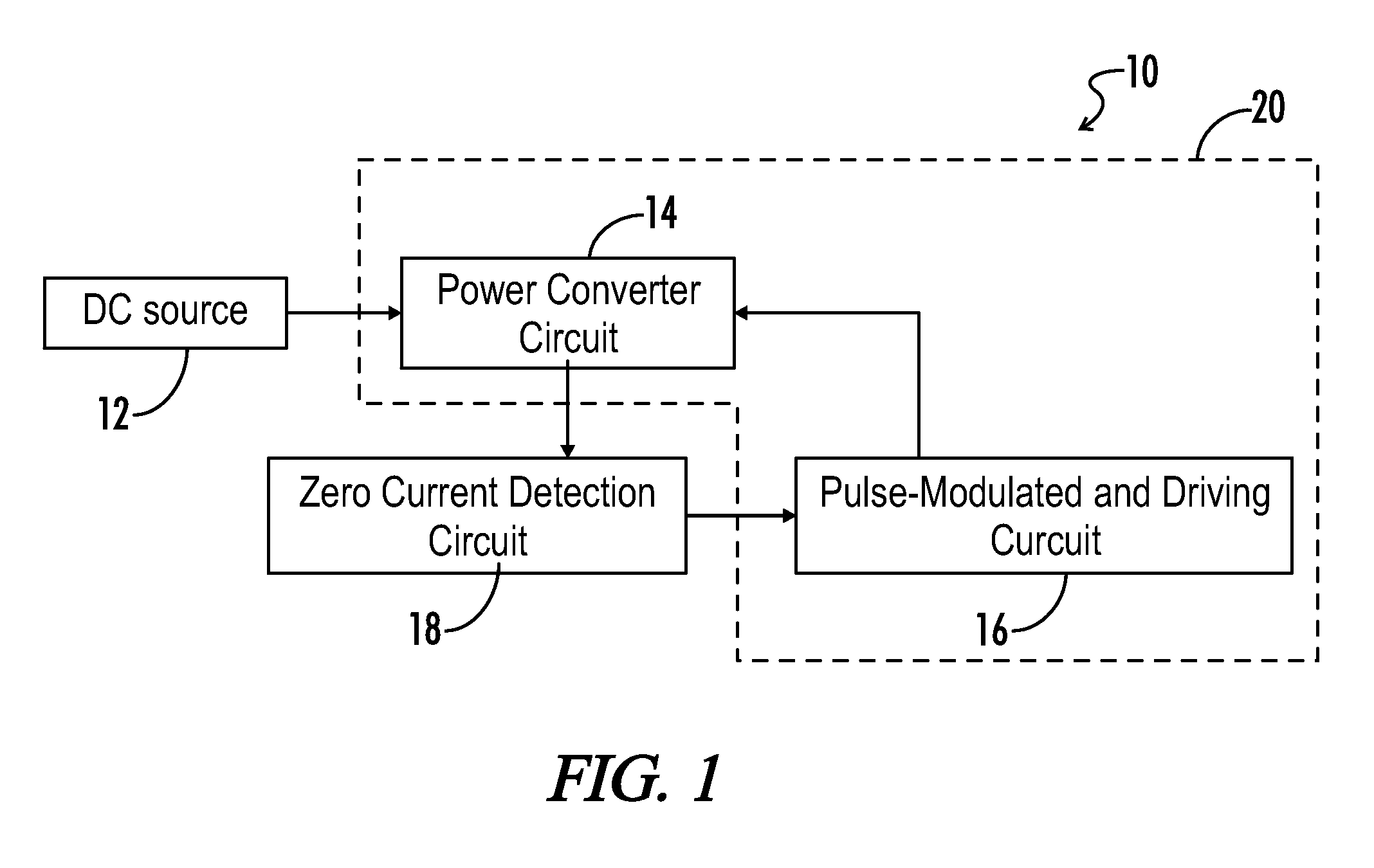Method and system to detect zero current conditions in an electronic ballast by monitoring voltage across a buck inductor
a technology of zero current conditions and electronic ballasts, applied in the direction of electric variable regulation, process and machine control, instruments, etc., can solve the problems of energy inefficiency, lamp efficiency challenges, power loss, etc., and achieve the effect of reducing switching losses in electronic ballasts
- Summary
- Abstract
- Description
- Claims
- Application Information
AI Technical Summary
Benefits of technology
Problems solved by technology
Method used
Image
Examples
Embodiment Construction
[0021]The present invention relates generally to electronic ballasts for gas discharge lamps. More specifically, this invention relates to an electronic ballast with a zero-current detection circuit.
[0022]FIG. 1 is a block diagram of a portion of an electronic ballast 10. The block diagram illustrates a DC source 12 supplying power to the ballast 10. The DC source 12 may be a generator providing a DC signal. The DC source 12 may also describe the output of a rectifier circuit that accepts AC signals from an AC source and converts them into substantially constant DC signals. Further, the DC source 12 may describe the output of a power factor correcting circuit (or combination power factor correcting and boost circuit) that accepts a DC signal input, usually from a rectifier circuit, and generates a DC signal at a desired level and ensures that the power factor of the AC source does not deviate from a predetermined range.
[0023]The DC source 12 is coupled to a power converter circuit 1...
PUM
 Login to View More
Login to View More Abstract
Description
Claims
Application Information
 Login to View More
Login to View More - R&D
- Intellectual Property
- Life Sciences
- Materials
- Tech Scout
- Unparalleled Data Quality
- Higher Quality Content
- 60% Fewer Hallucinations
Browse by: Latest US Patents, China's latest patents, Technical Efficacy Thesaurus, Application Domain, Technology Topic, Popular Technical Reports.
© 2025 PatSnap. All rights reserved.Legal|Privacy policy|Modern Slavery Act Transparency Statement|Sitemap|About US| Contact US: help@patsnap.com



